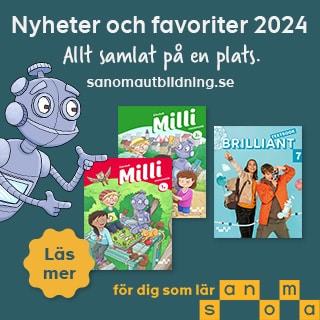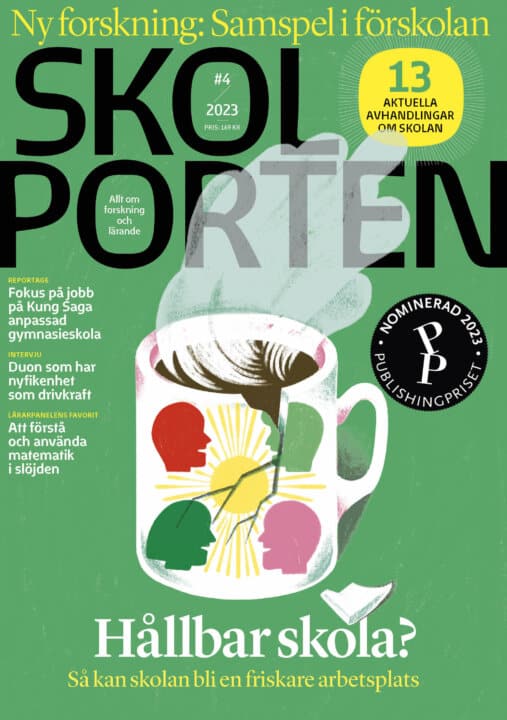Effects of Intensive Behavioural Treatment and a focused Imitation Intervention for young Children with Autism Spectrum Disorder – One plus One means More
Birgitta Spjut Janson har utvärderat två behandlingsmetoder, Intensiv imitation och Intensivinlärning (TAU), för små barn under fyra år som nyss fått diagnos autism.
Birgitta Spjut Janson
Professor Tomas Tjus, Göteborgs universitet Professor Mikael Heimann, Linköpings universitet
Professor Sven Bölte, CAP; Karolinska Institute/KIND
Göteborgs universitet
2017-05-19
Effects of Intensive Behavioural Treatment and a focused Imitation Intervention for young Children with Autism Spectrum Disorder – One plus One means More
Psykologiska institutionen
Effects of Intensive Behavioural Treatment and a focused Imitation Intervention for young Children with Autism Spectrum Disorder – One plus One means More
The general aim of this thesis was to investigate the effectiveness of interventions offered to children with autism attending the Habilitation services. Another aim was to investigate the efficacy of a new intervention within the setting of Swedish Habilitation services, namely Imitation Responding. In Study I the aim was to investigate if habilitation services, after early screening, showed a positive outcome. The interventions were Intensive Behavior Treatment (IBT), and Eclectic Interventions encompassing a selection of methods based on TEACCH or communication methods such as ComeAlong. In study II the aim was to explore if an intervention based on imitation, Imitation Responding (IR), could function as a complement to a comprehensive IL/IBT, which is treatment as usual at the Habilitation services. In Study III the aim was to examine if generalized joint attention had been developed in the group of children with autism that received IR followed by IL/IBT and the group of children with autism that received IL/IBT only. Study I investigated the impact of intelligence on outcome of interventions from Habilitation service in a naturalistic study. The actual comprehensive program is Intensive Learning for young children with autism, an IBT intervention (acronym: IL/IBT) offered as regular or modified version. The Modified IL/IBT had only parents as trainers and low weekly intensity. The Regular IL/IBT had both parents and preschools staff as trainers and with planned training of 25 hrs/weekly. The third group encompassed Eclectic interventions. Child variables at initial assessment (IQ in particular) accounted for most of the outcome variance regardless of intervention group. Although the mean adaptive composite score did not change significantly between start of intervention and follow-up, the variance increased significantly. This underscores the need for regular monitoring of the child´s functioning and developmental gain/loss during the intervention period and the necessity to consider a change or modification of the program in use. Study II comprised of 40 children with Autism Spectrum Disorder (ASD), after receiving diagnosis they were randomized to either IL/IBT, which is standard treatment in child habilitation service, or the new treatment Imitation Responding (IR). IR is a focused program directed to increase the child´s ability to respond to other´s communication and to learn from others by utilizing a Being Imitated strategy, where the therapist imitates the child. All children got their first intervention during 12 weeks. iv The IR group, mean age 41.6 months at start of intervention received treatment on average 2.2 hours/week while the IL/IBT group, mean age 40.1 months at start of intervention, received 14.4 hours/week. Before and after treatment all children were assessed with The Psycho Educational Profile – revised edition (PEP-R), and Vineland Behavior Adaptive Scales, second edition (VABS- II). Seven measures from the PEP-R and VABS-II, covering language, play, interpersonal relations, and visuo-motor imitation, were used as outcome measures. Results showed a significant increase in 6 out of 7 subscales for both intervention groups but no significant difference was noted in any of the subscales when comparing the groups. Only the IR group had a significant gain on the measure of interpersonal relations. We interpret the findings as support for IR to be used as a complementary intervention strategy alongside comprehensive programs such as IL/IBT. Study III examined if the intervention IR or if IL/IBT could have an effect on the development of IJA in children with autism. One group received IR for three months followed by IL/IBT for 12 months, whereas the second group received only IL/IBT for the whole 15 months period. Two measures of IJA were used: A gaze shift score and a sum score of pointing and showing. IJA did not change during the first three months of treatment, nor were any significant differences between the interventions groups noted. However, at the end of the 15-monthlong intervention period the gaze shift score had increased significantly for the IR group followed by IL/IBT training in contrast to the IL/IBT only group. No significant change was noted for pointing and showing. Our results indicate that IR with the Being Imitated strategy might be useful if implemented early as a “start-up” – intervention, which is followed by an IL/IBT treatment.
Relaterade länkar

Undervisa i artificiell intelligens
 Gy–Vux
Gy–Vux 







